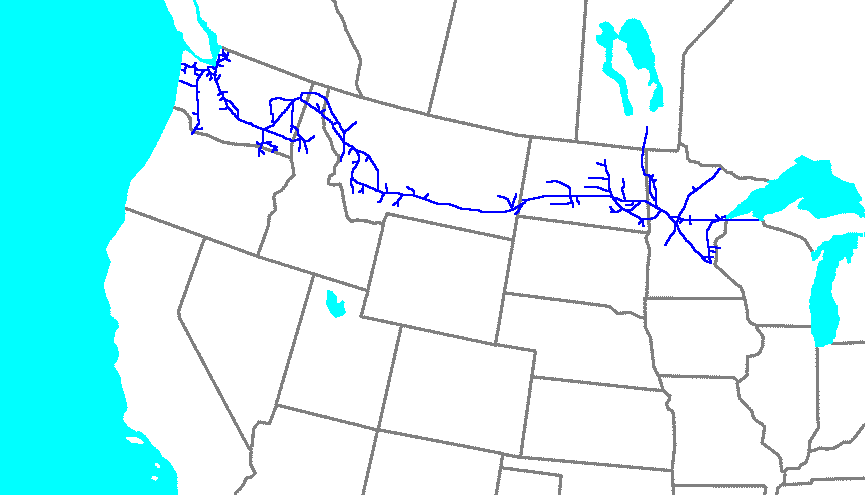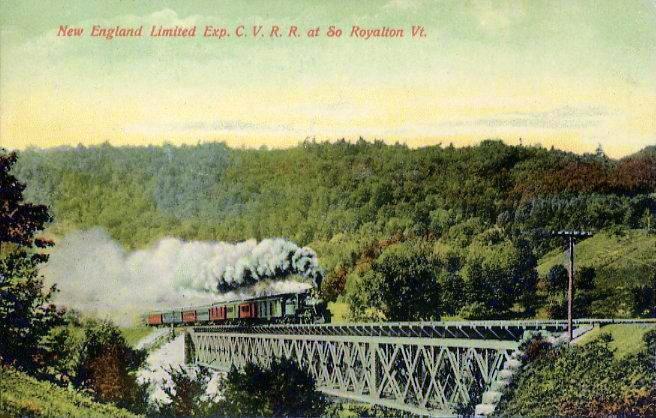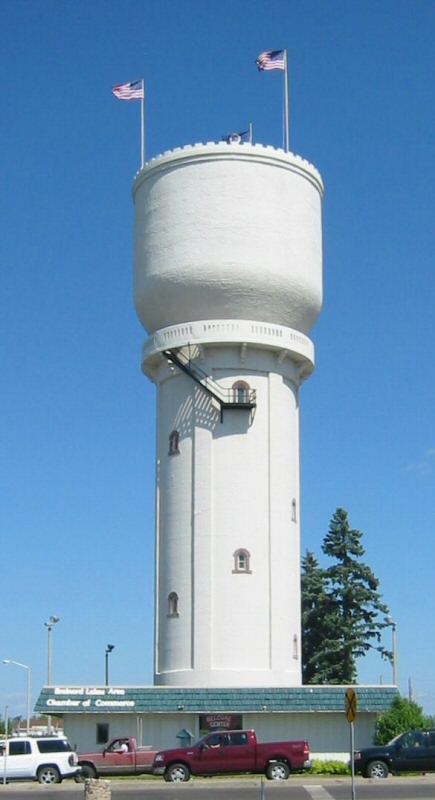|
J. Gregory Smith
John Gregory Smith (July 22, 1818 – November 6, 1891) was a Vermont businessman and politician. He is most notable for serving as the 28th governor of Vermont from 1863 to 1865, the last of Vermont's American Civil War, Civil War chief executives. Biography Smith was born in 1818 in St. Albans (city), Vermont, St. Albans, Vermont, son of John Smith (Vermont), John Smith and Maria (Curtis) Smith. His father was a pioneer railroad builder in Vermont, and a leading lawyer and political figure. He served one term in the US Congress, beginning in 1839. J. Gregory Smith graduated from the University of Vermont in 1838, where he was a founding member of the Lambda Iota Society, and attended Yale Law School. In 1842, he received his Master of Arts degree from the University of Vermont. In 1877 the university awarded him the honorary degree of Legum Doctor, LL.D. In 1842, Smith married Ann Eliza Smith, Ann Eliza Brainerd, daughter of U.S. Senator Lawrence Brainerd. She became prom ... [...More Info...] [...Related Items...] OR: [Wikipedia] [Google] [Baidu] |
Frederick Holbrook
Frederick Holbrook (February 15, 1813 – April 28, 1909) was an American farmer, businessman, and Governor of the State of Vermont. Active in politics and government, first as a Whig, and later as a Republican, he was most notable for his service as the 27th governor of Vermont from 1861 to 1863. A native of East Windsor, Connecticut, Holbrook was a son of Sarah (Knowlton) Holbrook and John Holbrook and a grandson of Luke Knowlton. He was raised in Vermont and educated at the Berkshire Gymnasium in Pittsfield, Massachusetts, then embarked on careers in farming and business as a resident of Brattleboro. Holbrook served briefly in the militia, and became active in local government as Register of Probate for the Marlboro District, an office he held from 1848 to 1861. He represented Windham County in the Vermont Senate from 1849 to 1850. Holbrook became a Republican when the party was founded in the mid-1850s. In 1861 he was the party's successful nominee for governor. He was ... [...More Info...] [...Related Items...] OR: [Wikipedia] [Google] [Baidu] |
Governor Of Vermont
The governor of Vermont is the head of government of Vermont. The officeholder is elected in even-numbered years by direct voting for a term of 2 years. Vermont and bordering New Hampshire are the only states to hold gubernatorial elections every 2 years, instead of every 4 as in the other 48 U.S. states. There is no limit on the number of terms a Vermont Governor can serve. If no candidate receives at least 50% plus one vote of all votes for Governor cast in the election, the Governor of Vermont is then elected by the state legislature.Constitution of Vermont Chapter 2, Section 20. The incumbent Vermont Governor is Republican Phil Scott. He was sworn in on January 5, 2017, becoming Vermont's 82nd Governor. Function The Governor's working offices are located in The Pavilion in the state capital of Montpelier, Vermont. The Governor's ceremonial office, used during the legislative session of the General Assembly, is located in the Vermont State House, also in Montpelier. The Co ... [...More Info...] [...Related Items...] OR: [Wikipedia] [Google] [Baidu] |
Confederate States Of America
The Confederate States of America (CSA), commonly referred to as the Confederate States or the Confederacy was an unrecognized breakaway republic in the Southern United States that existed from February 8, 1861, to May 9, 1865. The Confederacy comprised U.S. states that declared secession and warred against the United States during the American Civil War: South Carolina, Mississippi, Florida, Alabama, Georgia, Louisiana, Texas, Virginia, Arkansas, Tennessee, and North Carolina. Kentucky and Missouri also declared secession and had full representation in the Confederate Congress, though their territory was largely controlled by Union forces. The Confederacy was formed on February 8, 1861, by seven slave states: South Carolina, Mississippi, Florida, Alabama, Georgia, Louisiana, and Texas. All seven were in the Deep South region of the United States, whose economy was heavily dependent upon agriculture—particularly cotton—and a plantation system that relied upon enslaved ... [...More Info...] [...Related Items...] OR: [Wikipedia] [Google] [Baidu] |
Vermont Senate
The Vermont Senate is the upper house of the Vermont General Assembly, the state legislature of the U.S. state of Vermont. The senate consists of 30 members. Senate districting divides the 30 members into three single-member districts, six two-member districts, three three-member districts, and one six-member district. Each senator represents at least 20,300 citizens. Senators are elected to two-year terms and there is no limit to the number of terms that a senator may serve. As in other upper houses of state and territorial legislatures and the U.S. Senate, the state senate of Vermont has special functions, such as confirming or rejecting gubernatorial appointments to executive departments, the state cabinet, commissions, and boards, as well as electing members to the Vermont Supreme Court. The Vermont Senate meets at the Vermont State House in the state capital of Montpelier. Districting and terms Senators are elected from a total of 13 single and multi-member senate distri ... [...More Info...] [...Related Items...] OR: [Wikipedia] [Google] [Baidu] |
Northern Pacific Railway
The Northern Pacific Railway was a transcontinental railroad that operated across the northern tier of the western United States, from Minnesota to the Pacific Northwest. It was approved by Congress in 1864 and given nearly of land grants, which it used to raise money in Europe for construction. Construction began in 1870 and the main line opened all the way from the Great Lakes to the Pacific when former President Ulysses S. Grant drove in the final "golden spike" in western Montana on September 8, 1883. The railroad had about of track and served a large area, including extensive trackage in the states of Idaho, Minnesota, Montana, North Dakota, Oregon, Washington, and Wisconsin. In addition, the NP had an international branch to Winnipeg, Manitoba, Canada. The main activities were shipping wheat and other farm products, cattle, timber, and minerals; bringing in consumer goods, transporting passengers; and selling land. The Northern Pacific was headquartered in Minnesota, fir ... [...More Info...] [...Related Items...] OR: [Wikipedia] [Google] [Baidu] |
Vermont And Canada Railroad
The Central Vermont Railway was a railroad that operated in the U.S. states of Connecticut, Massachusetts, New Hampshire, New York, and Vermont, as well as the Canadian province of Quebec. It connected Montreal, Quebec, with New London, Connecticut, using a route along the shores of Lake Champlain, through the Green Mountains and along the Connecticut River valley, as well as Montreal to Boston, Massachusetts, through a connection with the Boston and Maine Railroad at White River Junction, Vermont. History The Vermont Central Railroad was chartered October 31, 1843, to build a line across the center of Vermont, running from Burlington on Lake Champlain east to Montpelier, and then southeast and south to Windsor on the Connecticut River. Initial plans had the main line running through Montpelier. However, due to the difficulty of building through the Williamstown Gulf, a narrow valley south of Barre, Vermont, and to land interests of Charles Paine in Northfield, Vermont, a ... [...More Info...] [...Related Items...] OR: [Wikipedia] [Google] [Baidu] |
Lieutenant Governor Of Vermont
The lieutenant governor of Vermont is elected for a two-year term and chosen separately from the governor. The Vermont Lieutenant Governor's main responsibilities include acting as governor when the governor is out of state or incapacitated, presiding over the Vermont Senate, casting tie-breaking votes in the Senate when required, and acceding to the governorship in case of a vacancy. As a member of the state senate's Committee on Committees, the lieutenant governor plays a role in determining committee assignments for individual senators, as well as selecting committee chairs, vice chairs, and clerks. Mountain rule From the founding of the Republican Party in the 1850s until the 1960s only Republicans won general elections for Vermont's statewide offices. One method that made this possible was imposition of the "Mountain Rule." Under the provisions of the Mountain Rule, one U.S. Senator was a resident of the east side of the Green Mountains and one resided on the west side, an ... [...More Info...] [...Related Items...] OR: [Wikipedia] [Google] [Baidu] |
Mississippi River
The Mississippi River is the second-longest river and chief river of the second-largest drainage system in North America, second only to the Hudson Bay drainage system. From its traditional source of Lake Itasca in northern Minnesota, it flows generally south for to the Mississippi River Delta in the Gulf of Mexico. With its many tributaries, the Mississippi's watershed drains all or parts of 32 U.S. states and two Canadian provinces between the Rocky and Appalachian mountains. The main stem is entirely within the United States; the total drainage basin is , of which only about one percent is in Canada. The Mississippi ranks as the thirteenth-largest river by discharge in the world. The river either borders or passes through the states of Minnesota, Wisconsin, Iowa, Illinois, Missouri, Kentucky, Tennessee, Arkansas, Mississippi, and Louisiana. Native Americans have lived along the Mississippi River and its tributaries for thousands of years. Most were hunter-ga ... [...More Info...] [...Related Items...] OR: [Wikipedia] [Google] [Baidu] |
Northern Pacific Railroad
The Northern Pacific Railway was a transcontinental railroad that operated across the northern tier of the western United States, from Minnesota to the Pacific Northwest. It was approved by 38th United States Congress, Congress in 1864 and given nearly of Land grant, land grants, which it used to raise money in Europe for construction. Construction began in 1870 and the main line opened all the way from the Great Lakes to the Pacific Ocean, Pacific when former President of the United States, President Ulysses S. Grant drove in the final "golden spike" in western Montana on September 8, 1883. The railroad had about of track and served a large area, including extensive trackage in the states of Idaho Panhandle, Idaho, Minnesota, Montana, North Dakota, Oregon, Washington (state), Washington, and Wisconsin. In addition, the NP had an international branch to Winnipeg, Manitoba, Canada. The main activities were shipping wheat and other farm products, cattle, timber, and minerals; bri ... [...More Info...] [...Related Items...] OR: [Wikipedia] [Google] [Baidu] |
Brainerd, Minnesota
Brainerd is a city in Crow Wing County, Minnesota, United States. Its population was 14,395 at the 2020 census. It is the county seat of Crow Wing County. Brainerd straddles the Mississippi River several miles upstream from its confluence with the Crow Wing River, having been founded as a site for a railroad crossing above the confluence. Brainerd is the principal city of the Brainerd Micropolitan Area, a micropolitan area covering Cass and Crow Wing counties and with a combined population of 96,189 at the 2020 census. The city is well known for being the partial setting of the 1996 film '' Fargo''. History The area that is now Brainerd was formerly Ojibwe territory. Brainerd was first seen by European settlers on Christmas Day in 1805, when Zebulon Pike stopped there while searching for the headwaters of the Mississippi River. Crow Wing Village, a fur and logging community near Fort Ripley, brought settlers to the area in the mid-19th century. In those early years, the ... [...More Info...] [...Related Items...] OR: [Wikipedia] [Google] [Baidu] |
Legum Doctor
Legum Doctor (Latin: “teacher of the laws”) (LL.D.) or, in English, Doctor of Laws, is a doctorate-level academic degree in law or an honorary degree, depending on the jurisdiction. The double “L” in the abbreviation refers to the early practice in the University of Cambridge to teach both canon law and civil law (Doctor of both laws), with the double “L” itself indicating the plural, although Cambridge now gives the degree the name Doctor of Law in English. This contrasts with the practice of the University of Oxford, where the degree that survived from the Middle Ages is the DCL or Doctor of Civil Law (only). European and Commonwealth usage In the United Kingdom, Australia, New Zealand, and a number of European countries, the LL.D. is a higher doctorate usually awarded on the basis of exceptionally insightful and distinctive publications that contain significant and original contributions to the study of law. In South Africa, the LL.D. is awarded by many unive ... [...More Info...] [...Related Items...] OR: [Wikipedia] [Google] [Baidu] |
Honorary Degree
An honorary degree is an academic degree for which a university (or other degree-awarding institution) has waived all of the usual requirements. It is also known by the Latin phrases ''honoris causa'' ("for the sake of the honour") or ''ad honorem '' ("to the honour"). The degree is typically a doctorate or, less commonly, a master's degree, and may be awarded to someone who has no prior connection with the academic institution or no previous postsecondary education. An example of identifying a recipient of this award is as follows: Doctorate in Business Administration (''Hon. Causa''). The degree is often conferred as a way of honouring a distinguished visitor's contributions to a specific field or to society in general. It is sometimes recommended that such degrees be listed in one's curriculum vitae (CV) as an award, and not in the education section. With regard to the use of this honorific, the policies of institutions of higher education generally ask that recipients ... [...More Info...] [...Related Items...] OR: [Wikipedia] [Google] [Baidu] |







